SEDIMENT
Bus Projects, Melbourne (2017)
Bus Projects, Melbourne (2017)
Sediment was an attempt to visualise the traces of human material which are
infusing the geological record. Here electronic waste was collected from land-fill
sites in the northern suburbs of Melbourne and broken down, compressed and
heated, mimicking the basic processes of geological formation. The fine particles
of plastics, metallic alloys and chemical compounds, were documented with a
scanning electron microscope, which delineates an image from the variation in resistance
to electronic frequencies. It is a highly specialised instrument which itself
is subject to the cycles of planned obsolescence and technological supersedence.
Enlarged and printed in metallic paper, the image produced transforms a single
particle into an infinitely detailed planetary form suspended in space.
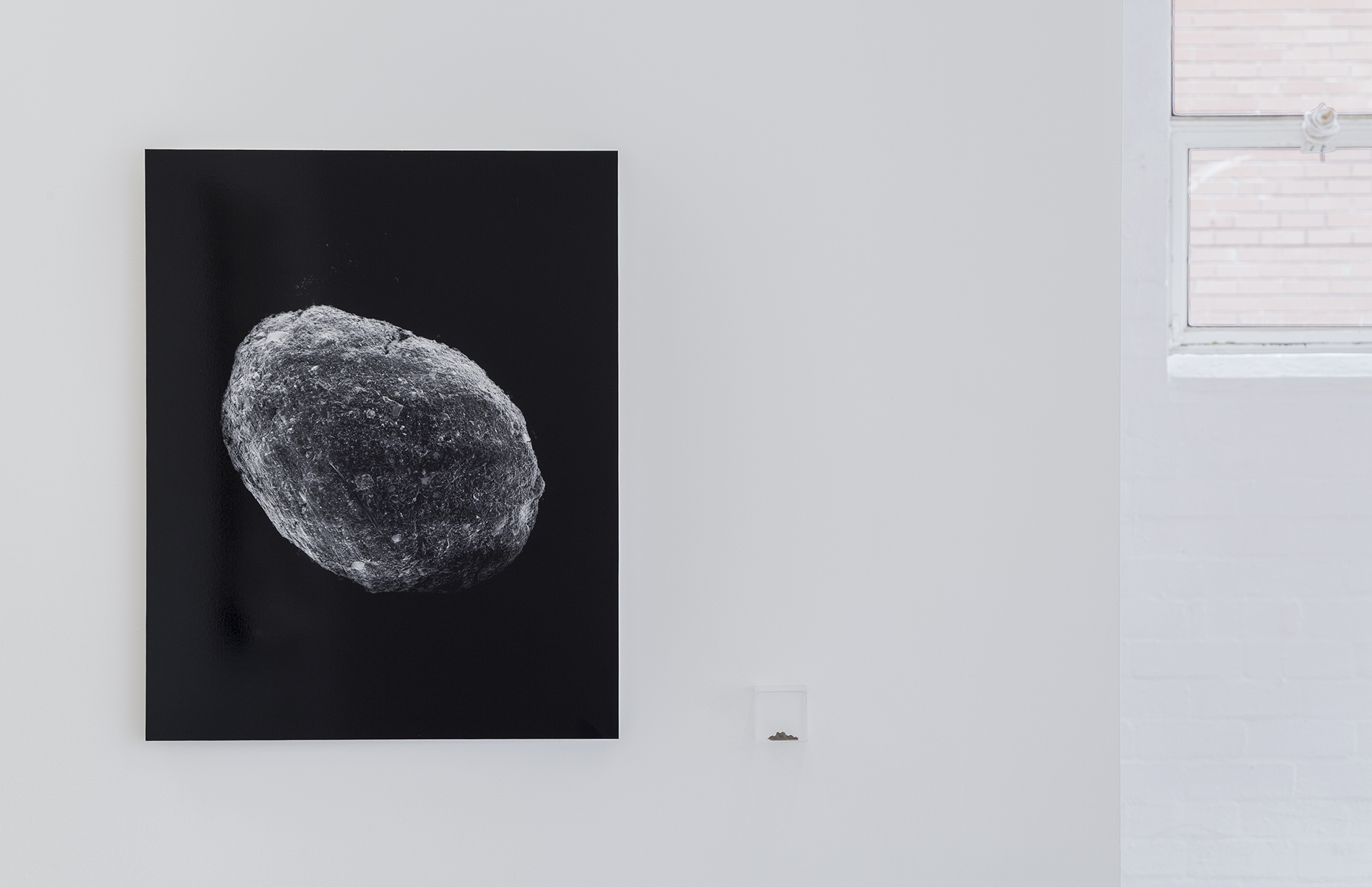
Particlised electronic waste, acryllic box, scanning electron micrograph, metallic c-print mounted on diabond. 75.5 x 85 x 6cm. Made with the assistance of University of Melbourne, Centre for Electron Microscopy.
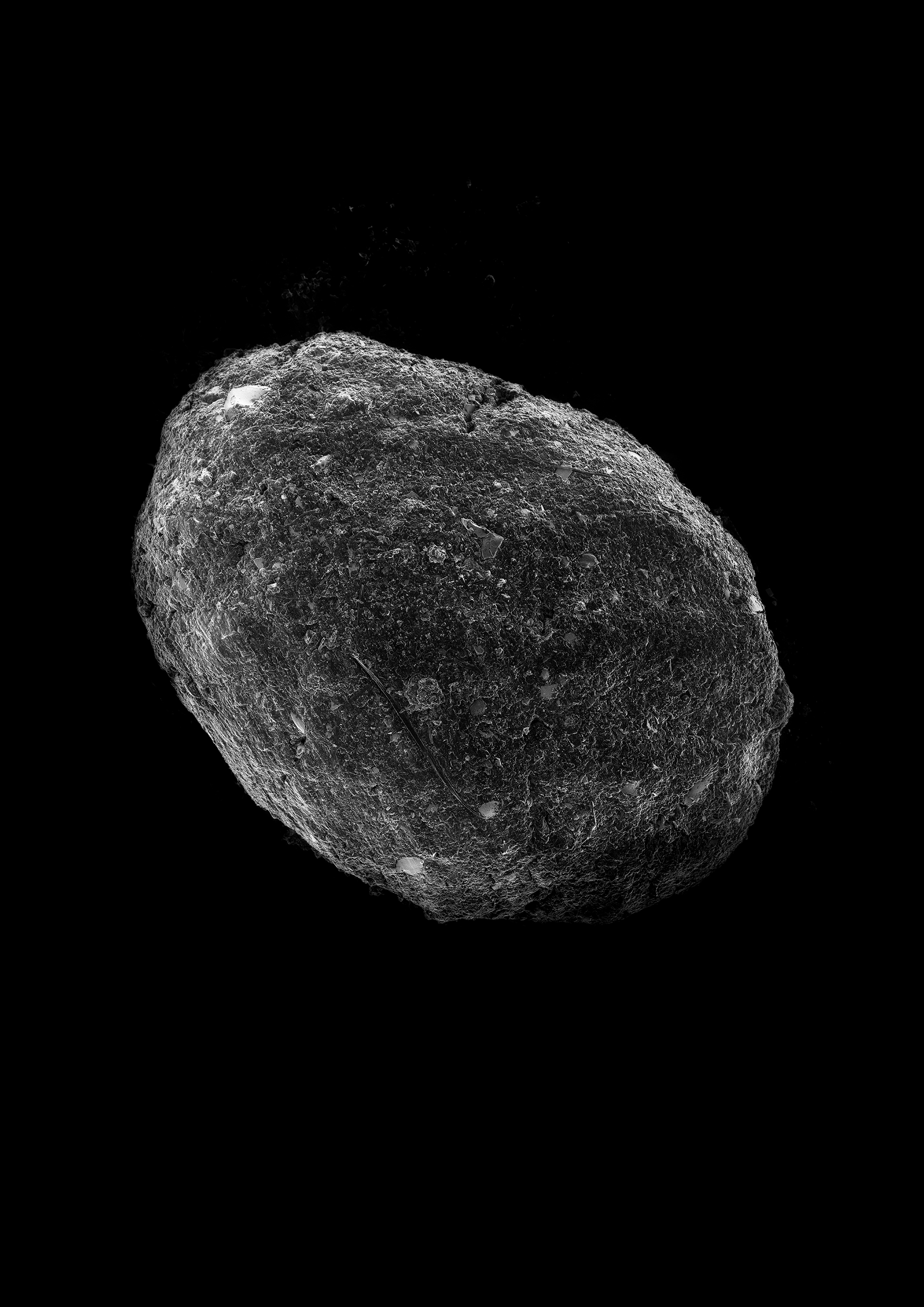
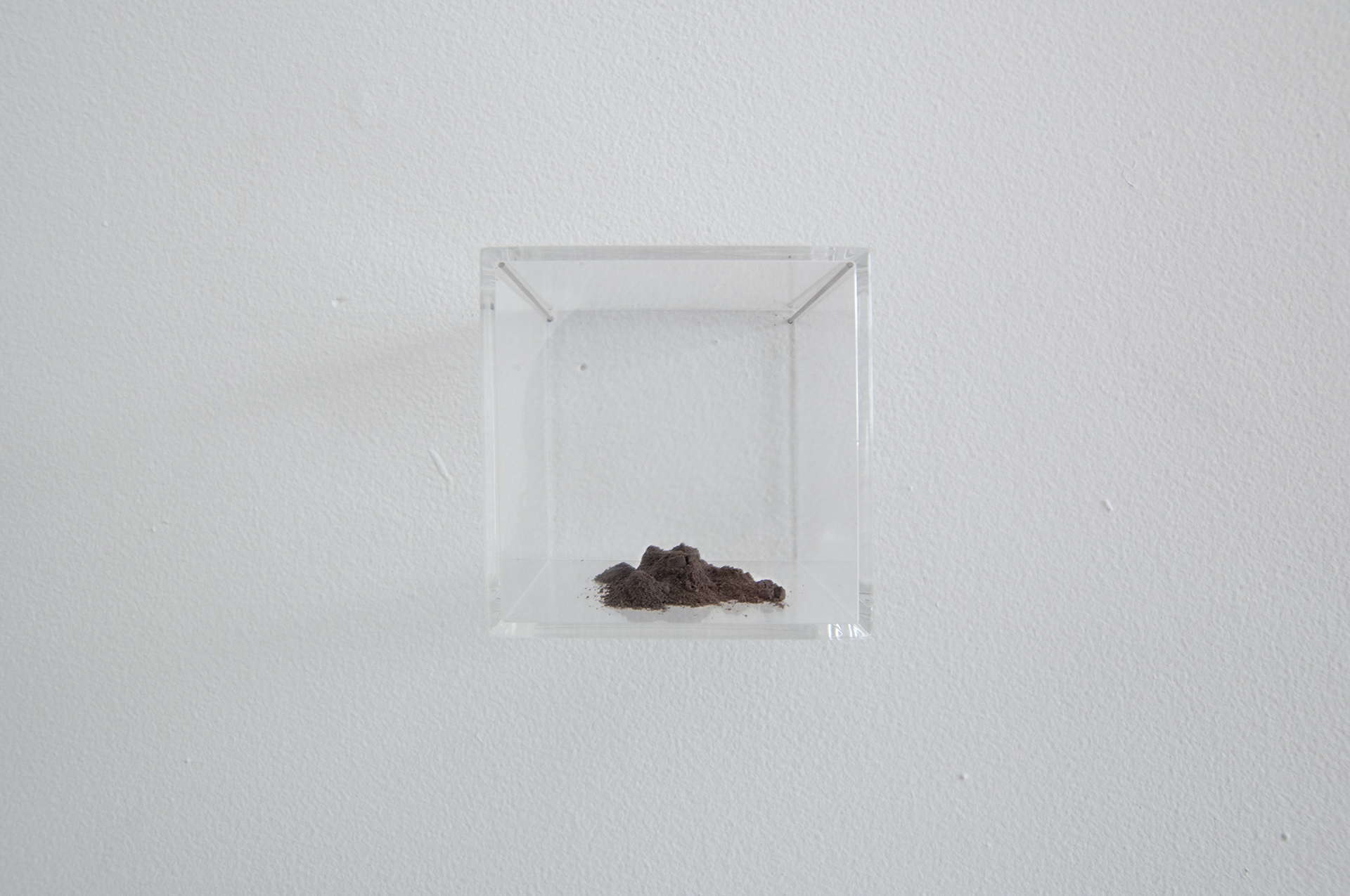
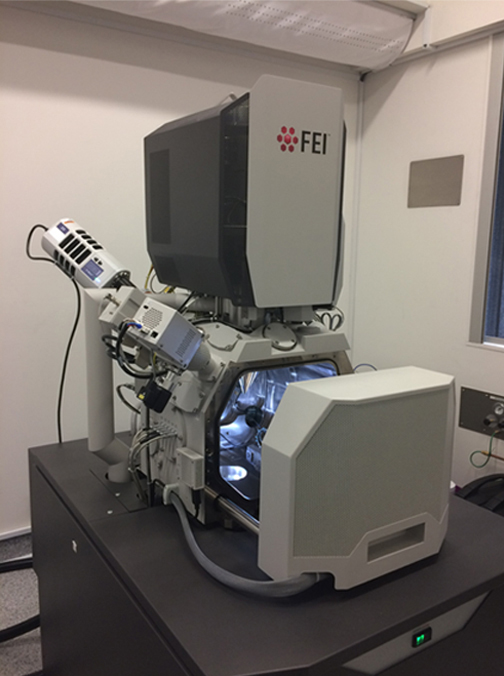
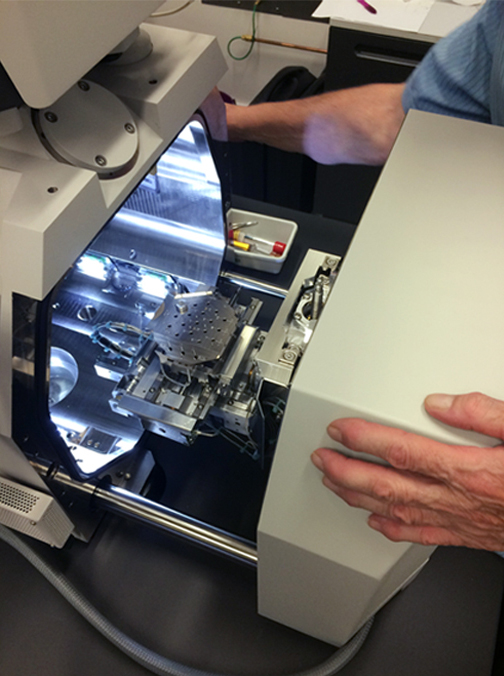
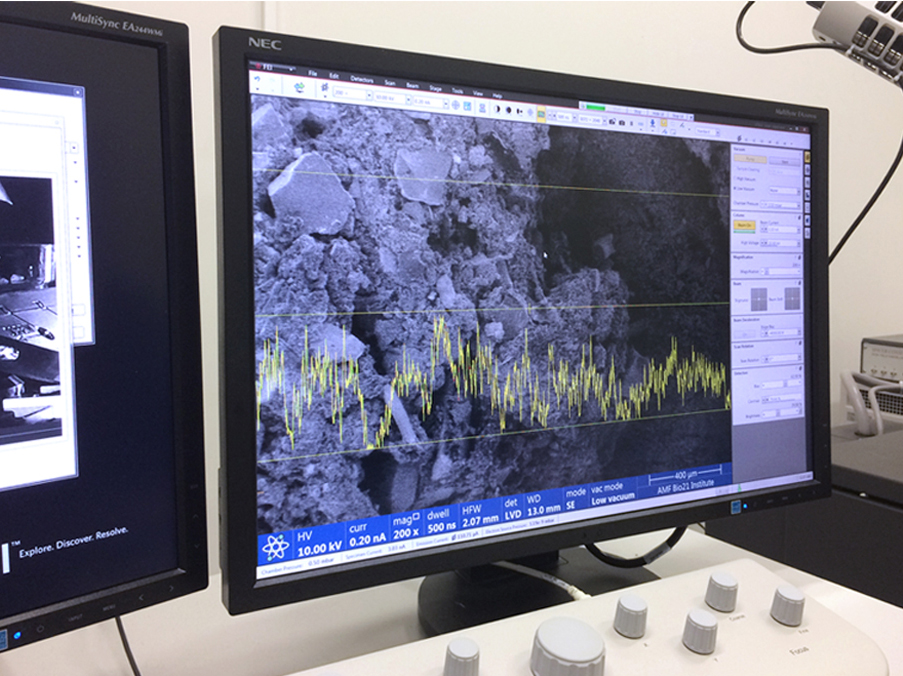
Imaging electronic-waste particles with a scanning electron microscope, Centre for Electron Microscopy, University of Melbourne 2017.